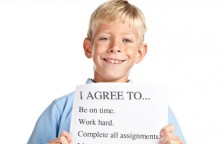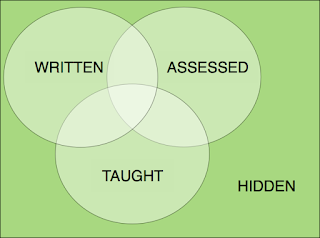Parents and teachers who interact with kids and teens who have Asperger’s (AS) and High Functioning Autism (HFA) often observe unusual sensory responses. For instance, these young people are often hypersensitive to certain visual stimuli (e.g., fluorescent lights) and certain sounds (e.g., echoing noises in a school gym). This sensitivity can cause agitation and behavior problems.
Some children with AS and HFA have been reported to have a high tolerance for physical pain. In addition, kids on the spectrum commonly engage in self-stimulatory responses (e.g., obsessive object spinning, light filtering, etc.) and other unusual stereotyped patterns of behavior.
These behaviors are most often displayed when the youngster is under stress or when he experiences fatigue, sensory overload, etc. The sensory issues of kids and teens with AS and HFA appear similar to those with autism; however, their reactions to sensory issues seem more overt than those seen in children with autism.
Hypo-sensitivities (i.e., low sensitivity) to sensory input may include:
Hypo-sensitivities (i.e., low sensitivity) to sensory input may include:

- A constant need to touch people or textures, even when it’s inappropriate to do so
- An extremely high tolerance for - or indifference to - pain
- Clumsy and uncoordinated movements
- Doesn’t understand personal space even when same-age peers are old enough to understand it
- Enjoys movement-based play (e.g., spinning, jumping, etc.)
- May be very fidgety and unable to sit still
- Often (unintentionally) harms other children and/or pets when playing because he doesn’t understand his own strength
- Seems to be a “thrill seeker” and can be dangerous at times
Hyper-sensitivities (i.e., high sensitivity) to sensory input may include:
- Avoids hugs and cuddling, even with parents
- Avoids standing in close proximity to others
- Doesn’t enjoy a game of tag
- Doesn’t like her feet to be off the ground
- Extreme response to - or fear of - sudden, high-pitched, loud, or metallic noises (e.g., flushing toilets, clanking silverware, other noises that are not offensive to others)
- Extremely fearful of climbing or falling, even when there is no real danger
- Fearful of surprise touch
- Has poor balance, and may fall often
- May notice and/or be distracted by background noises that others don’t seem to hear
- Overly fearful of swings and playground equipment
- Seems fearful of crowds
Researchers have conducted studies on sensory issues with AS and HFA children. The vast majority of subjects who participated in the studies had impairments in the following areas:
- emotional reactive
- inattention/distractibility
- low/endurance tone
- oral sensory sensitivity
- poor registration
- sedentary
More than 75% of these subjects demonstrated behavioral problems when sensory issues were violated. The researchers concluded that AS and HFA children have a sensory profile distinctive from “typical” children and are apt to demonstrate disruptive behaviors when they encounter sensory problems.
==> How to Prevent Meltdowns and Tantrums in Children with Autism Spectrum Disorder
Addressing sensory issues requires looking beyond the behavior to interpret its reason before designing an intervention. As in all interventions, a team approach works best (i.e., parents, teachers, and other caretakers working together). Furthermore, when dealing with sensory issues, an occupational therapist or other professional trained in sensory integration can be a valuable multidisciplinary team member.
Many of the interventions are easy to implement at home and school. Nonetheless, parents and teachers should work together as a team to pinpoint the behavior a youngster exhibits (i.e., incident), its cause (i.e., interpretation), and practical solutions (i.e., intervention).
A programmatic technique for responding to sensory issues is often beneficial to kids and teens on the spectrum. One program, the visually-based “How Does Your Engine Run: The Alert Program for Self-Regulation,” seems particularly well-suited to the needs of these “special needs” kids. This program was designed to help these children recognize their sensory needs. It helps them to recognize their level of alertness and compare it to task demands.
Addressing sensory issues requires looking beyond the behavior to interpret its reason before designing an intervention. As in all interventions, a team approach works best (i.e., parents, teachers, and other caretakers working together). Furthermore, when dealing with sensory issues, an occupational therapist or other professional trained in sensory integration can be a valuable multidisciplinary team member.
Many of the interventions are easy to implement at home and school. Nonetheless, parents and teachers should work together as a team to pinpoint the behavior a youngster exhibits (i.e., incident), its cause (i.e., interpretation), and practical solutions (i.e., intervention).
A programmatic technique for responding to sensory issues is often beneficial to kids and teens on the spectrum. One program, the visually-based “How Does Your Engine Run: The Alert Program for Self-Regulation,” seems particularly well-suited to the needs of these “special needs” kids. This program was designed to help these children recognize their sensory needs. It helps them to recognize their level of alertness and compare it to task demands.
If the two do not match, the youngster (after completing a series of lessons) is taught to adjust her arousal level to match task demands. To accomplish this, there are a variety of interventions grouped into 5 categories: aural, movement, oral, touch, and visual. The program is designed for occupational therapists to use in conjunction with parents and teachers.
As any one behavior may have many sensory causes, it is difficult to set forth a series of universally applied recommendations that can be implemented at home and school. Intervention is effective when it directly addresses the function of the behavior.
Here are some videos that look at the sensory challenges that many children and teens on the autism spectrum must face:
As any one behavior may have many sensory causes, it is difficult to set forth a series of universally applied recommendations that can be implemented at home and school. Intervention is effective when it directly addresses the function of the behavior.
Here are some videos that look at the sensory challenges that many children and teens on the autism spectrum must face:
==> Aspergers Kids and Sensory Issues
==> Imagine What It's Like To Live With High-Functioning Autism
==> Imagine What It's Like To Live With High-Functioning Autism
Resources for parents of children and teens on the autism spectrum:
==> How to Prevent Meltdowns and Tantrums in Children with Autism Spectrum Disorder
==> Parenting System that Reduces Defiant Behavior in Teens with Autism Spectrum Disorder
==> Launching Adult Children with Autism Spectrum Disorder: Guide for Parents Who Want to Promote Self-Reliance
==> Teaching Social-Skills and Emotion-Management to Children with Autism Spectrum Disorder
==> Parenting Children and Teens with High-Functioning Autism: Parents' Comprehensive Handbook
==> Unraveling the Mystery Behind High-Functioning Autism: Audio Book
==> Crucial Research-Based Parenting Strategies for Children and Teens with High-Functioning Autism
==> Parenting System that Reduces Defiant Behavior in Teens with Autism Spectrum Disorder
==> Launching Adult Children with Autism Spectrum Disorder: Guide for Parents Who Want to Promote Self-Reliance
==> Teaching Social-Skills and Emotion-Management to Children with Autism Spectrum Disorder
==> Parenting Children and Teens with High-Functioning Autism: Parents' Comprehensive Handbook
==> Unraveling the Mystery Behind High-Functioning Autism: Audio Book
==> Crucial Research-Based Parenting Strategies for Children and Teens with High-Functioning Autism
More articles for parents of children and teens on the autism spectrum:
Social rejection has devastating effects in many areas of functioning.
Because the ASD child tends to internalize how others treat him,
rejection damages self-esteem and often causes anxiety and depression.
As the child feels worse about himself and becomes more anxious and
depressed – he performs worse, socially and intellectually.
Click here to read the full article…
Click here to read the full article…
---------------------------------------------------------------
Meltdowns are not a pretty sight. They are somewhat like overblown
temper tantrums, but unlike tantrums, meltdowns can last anywhere from
ten minutes to over an hour. When it starts, the Asperger's or HFA child
is totally out-of-control. When it ends, both you and your child are
totally exhausted. But... don’t breathe a sigh of relief yet. At the
least provocation, for the remainder of that day -- and sometimes into
the next - the meltdown can return in full force.
Click here for the full article...
Click here for the full article...
--------------------------------------------------------------
Although Aspergers [high-functioning autism] is at the milder end of the
autism spectrum, the challenges parents face when disciplining a
teenager on the spectrum are more difficult than they would be with an
average teen. Complicated by defiant behavior, the teen is at risk for
even greater difficulties on multiple levels – unless the parents’
disciplinary techniques are tailored to their child's special needs.
Click here to read the full article…
Click here to read the full article…
------------------------------------------------------------
Your older teenager or young “adult child” isn’t sure what to do, and
he is asking you for money every few days. How do you cut the purse
strings and teach him to be independent? Parents of teens with ASD face
many problems that other parents do not. Time is running out for
teaching their adolescent how to become an independent adult. As one
mother put it, "There's so little time, yet so much left to do."
Click here to read the full article…
Click here to read the full article…
------------------------------------------------------------
Two traits often found in kids with High-Functioning Autism are
“mind-blindness” (i.e., the inability to predict the beliefs and
intentions of others) and “alexithymia” (i.e., the inability to
identify and interpret emotional signals in others). These two traits
reduce the youngster’s ability to empathize with peers. As a result, he
or she may be perceived by adults and other children as selfish,
insensitive and uncaring.
Click here to read the full article...
Click here to read the full article...
------------------------------------------------------------
Become an expert in helping your child cope with his or her
“out-of-control” emotions, inability to make and keep friends, stress,
anger, thinking errors, and resistance to change.
Click here for the full article...
------------------------------------------------------------
A child with High-Functioning Autism (HFA) can have
difficulty in school because, since he fits in so well, many adults
may miss the fact that he has a diagnosis. When these children display
symptoms of their disorder, they may be seen as defiant or disruptive.


.jpg)


